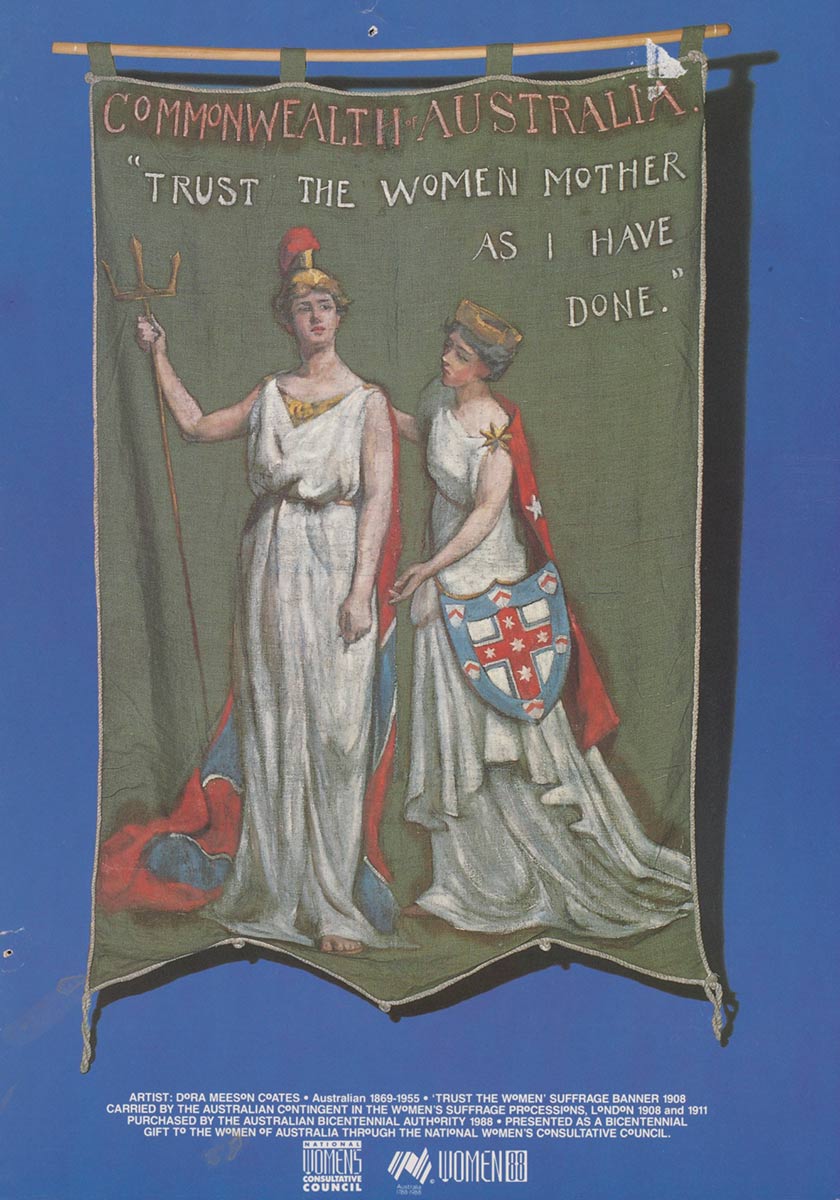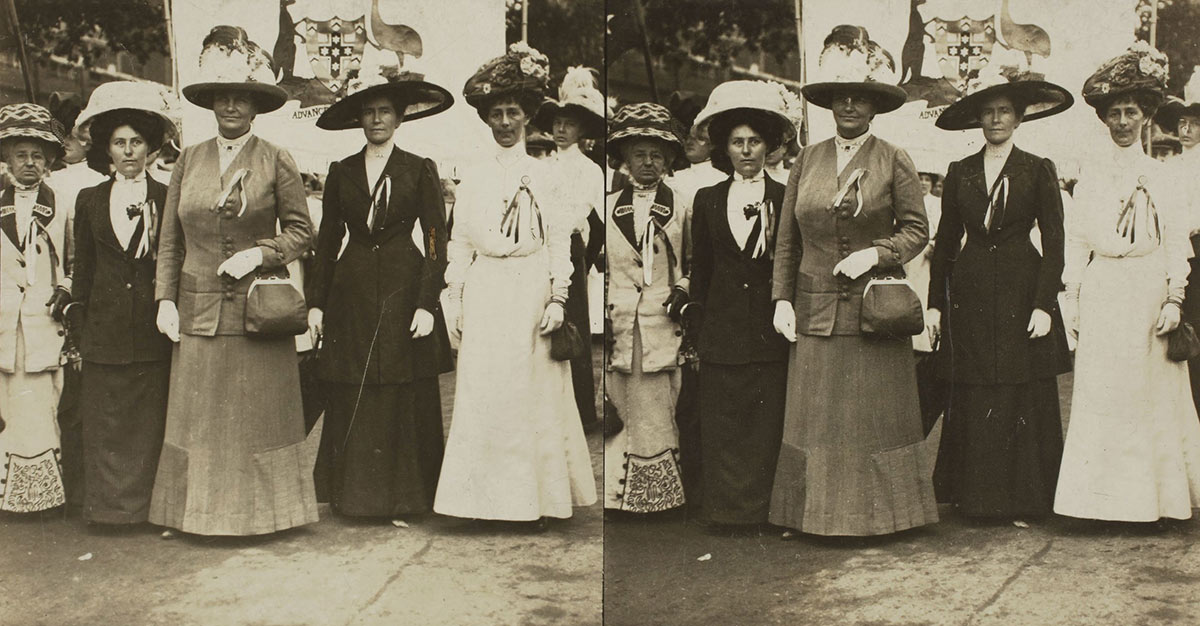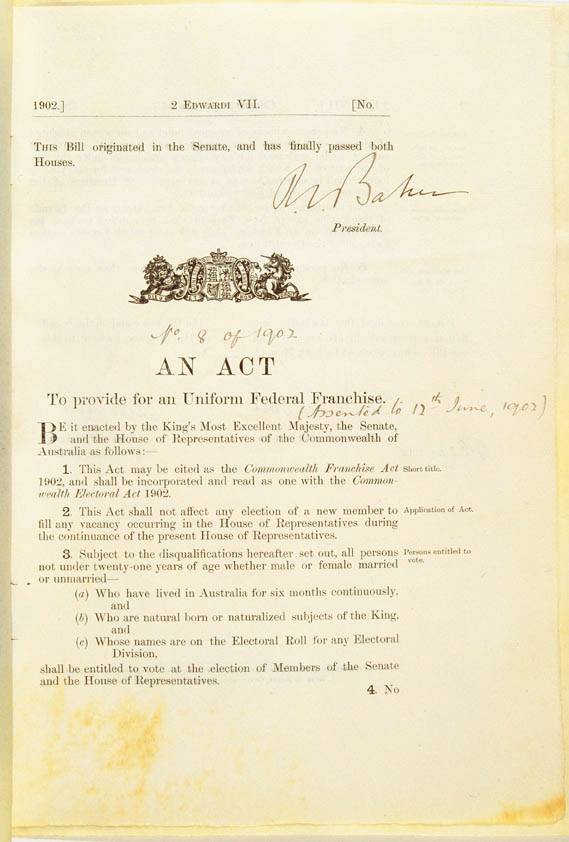When Australia federated in 1901, the Constitution restricted voting rights in federal elections to women who held those same rights at a state level.
Women in South Australia and some in Western Australia had been granted the right to vote. After lobbying by suffragists and some progressive politicians, the Commonwealth Franchise Act was enacted on 12 June 1902.
Women in Australia over the age of 21 could now vote in national elections and stand for the Australian Parliament, despite many not possessing the right to do so in their home states. The right to vote in federal elections was not granted to First Nations women or men until 1962.
Senator Richard O’Connor, 10 April 1902:
I see no reason in the world why we should continue to impose laws which have to be obeyed by the women of the community without giving them some voice in the election of the members who make those laws.

Fighting for women’s rights
Before Federation in 1901, Australia existed as separate colonies, each with their own system of governance. This meant that women had to petition separate colonial governments for the right to vote.
Female campaigners were known as suffragists and influential Australian figures included Vida Goldstein (Victoria), Catherine Helen Spence and Mary Lee (South Australia), Edith Cowan (Western Australia), Louisa Lawson (New South Wales) and Emma Miller (Queensland).
Social convention dictated that women should not participate in politics and female suffrage was widely opposed.
Despite this, suffragists employed many methods to spread awareness of their cause. They held rallies and meetings, wrote letters and articles for newspapers, collated petitions, gave public speeches, sent deputations to politicians and attended sessions of parliament.
Compromise deal
Prior to Federation, only 2 colonies had granted women the right to vote: South Australia in 1894 and Western Australia in 1899. South Australia granted all women the right to vote. First Nations women were excluded in Western Australia. South Australia’s legislation also included the right to stand for parliament, making that colony the first place in the world to give equal political rights to both men and women.
During an 1897 convention between colonies to determine the Constitution of federated Australia, the issue of female suffrage was hotly contested. The colonies that already allowed women to vote wanted their women to participate in federal elections. Those that had not established female voting did not want women involved at the federal level.
An agreement was reached whereby the new Constitution would allow an individual with an existing state vote to vote federally.
In the years between the 1897 convention and the official enactment of Federation in 1901, suffragists continued to petition politicians to amend the agreement and include the federal franchise of women in the Constitution.
While this did not occur by Federation, on 9 April 1902 Senator Richard O’Connor introduced into the Senate the Commonwealth Franchise Bill that, if passed, would remedy this.
Michelle Arrow, Assoc Professor of Modern History at Macquarie University, discusses white women getting the vote nationally.
Senator O'Connor's Bill
The Bill created much debate, as it would allow both women and many non-European migrants from British colonies to vote.
Many politicians from states that did not have universal suffrage felt the legislation aimed to pressure state governments into allowing excluded people to vote. There were also arguments that should it pass women would neglect their traditional family roles in favour of politics.
Despite this, most opponents made it known that they would agree to parts of the Bill dealing with women for the sake of political uniformity between the colonies. The same concession was not granted to non-European people and their inclusion was rejected.
Passing the Commonwealth Franchise Bill
By 12 June 1902 the legislation, with restrictive amendments, had passed through both the Senate and the House of Representatives and been given royal assent by the Governor-General.
Women in Australia over the age of 21 could now vote in elections and stand for the Australian Parliament, although many still did not have the right to do the same in their home states. The Franchise Act, however, specifically denied federal voting rights to every ‘aboriginal native’ of Australia, Asia, Africa, or the Islands of the Pacific who didn’t already have the right to vote in state elections. First Nations men and women only gained the right to vote in federal elections in 1962 after an amendment to the Commonwealth Electoral Act.
While women voted and ran in elections from 1903, it was not until 1943 that the first of them won seats in the Australian Parliament – Enid Lyons in the House of Representatives and Dorothy Tangney in the Senate.
Australian suffragists
As Australia was one of the first places in the world to allow women the vote, Australian suffragists were called upon by women in other countries, especially England and the United States, to provide advice.
Many, including the popular Vida Goldstein, travelled to the US and UK to speak at public forums and to attend rallies and marches for the British suffragists.
The banner pictured above was created by Australian artist Dora Meeson and was first carried by Goldstein and other Australian women in a march in London in 1908. The banner asks ‘Mother England’ to entrust women with the responsibility and the right to vote, as the Australian nation had done in 1902.
Note
The term ‘suffragist’ is distinct from ‘suffragette’. At the time, women who supported enfranchisement were called suffragists. Suffragettes referred to more militant suffragists, such as the Pankhursts and their supporters.
In our collection
References
The Commonwealth Franchise Act 1902 on Documenting a Democracy, Museum of Australian Democracy
Voters and the Franchise: the Federal Story, Australian Parliament House
Kirsten Lees, Votes for Women: The Australian Story, Allen and Unwin, St Leonards, 1995.
Audrey Oldfield, Woman Suffrage in Australia: A Gift or a Struggle?, Cambridge University Press, Cambridge, 1992.

